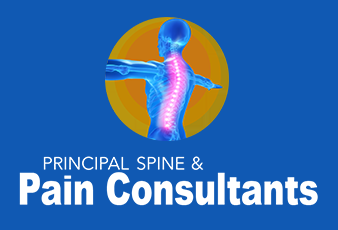
28 Apr Effective Tips and Treatments for Managing Sciatica Pain
If you’ve ever experienced sciatica, you know how uncomfortable and frustrating it can be. Sciatica refers to pain that radiates along the sciatic nerve, which runs from your lower back down through your hips and into your legs. This type of pain can range from mild to severe and is often caused by a herniated disc, spinal stenosis, or another condition that irritates the sciatic nerve. The good news is that there are many effective treatments available to help manage and reduce sciatica pain. Let’s look at some of the most effective tips and treatments to relieve sciatica pain and get you back to doing the things you love.
1. Physical Therapy and Exercise
One of the most effective ways to manage sciatica pain is through physical therapy. Physical therapists work with you to develop a personalized exercise program that focuses on strengthening the muscles in your lower back, hips, and legs. These exercises help take pressure off the sciatic nerve and improve flexibility.
Regular exercise, such as walking, swimming, or yoga, can also help reduce sciatica pain. Strengthening your core muscles and improving posture will reduce strain on your spine and the sciatic nerve, ultimately decreasing pain and preventing future flare-ups. However, be sure to consult with a doctor or physical therapist before starting any new exercise regimen.
2. Hot and Cold Therapy
When you first experience sciatica pain, using ice packs or a cold compress can help reduce inflammation and numb the pain. Applying cold therapy to the affected area for 15-20 minutes at a time can help decrease swelling and relieve pain.
Once the acute pain starts to subside, heat therapy can be very helpful. A heating pad or warm compress can help increase blood flow to the area, relax tight muscles, and soothe the pain. Just like cold therapy, make sure to apply heat for 15-20 minutes at a time to avoid irritation.
3. Medications
Over-the-counter medications such as ibuprofen or acetaminophen can help manage sciatica pain. These medications work by reducing inflammation and relieving pain. For more severe pain, your doctor may recommend stronger prescription medications or muscle relaxants.
In some cases, steroid injections may be used to reduce inflammation around the affected nerve and provide temporary relief from sciatica pain. These injections deliver powerful anti-inflammatory medication directly to the area around the spine, which can help reduce swelling and alleviate pain.
4. Chiropractic Care
Chiropractic care is another popular treatment option for sciatica pain. Chiropractors use hands-on spinal manipulation to help restore proper alignment to the spine and relieve pressure on the sciatic nerve. These adjustments can improve the way your spine moves and reduce discomfort.
Many patients with sciatica find chiropractic adjustments to be highly effective in managing pain and improving mobility. However, make sure to consult with your doctor before pursuing chiropractic care to ensure it’s the right option for you.
5. Massage Therapy
Massage therapy can be an excellent way to alleviate sciatica pain and reduce muscle tension. By focusing on the muscles in your lower back, hips, and legs, a skilled massage therapist can help relieve tightness and improve blood flow to the affected area. This can provide relief from the discomfort caused by sciatica and help speed up the healing process.
Massage therapy is also beneficial for reducing stress, which can exacerbate pain. It promotes relaxation and helps the body cope with the discomfort of sciatica.
6. Sciatica-specific Injections
For patients with more severe or persistent sciatica pain, epidural steroid injections or nerve block injections may be an option. These injections provide targeted relief by delivering medication directly to the area surrounding the sciatic nerve.
Epidural steroid injections are often used when other treatments have not been successful. They help reduce inflammation and provide long-lasting relief from pain, allowing you to return to your normal activities.
7. Surgical Intervention (When Necessary)
Surgery is typically a last resort when other treatments have not provided relief. If you have severe sciatica caused by a herniated disc or spinal stenosis that doesn’t respond to non-surgical treatments, your doctor may recommend surgery.
Surgical options, such as discectomy or laminectomy, are designed to remove the pressure on the sciatic nerve. These procedures can provide long-term relief for those who have not found success with other treatments.
Managing sciatica pain effectively is all about finding the right combination of treatments. Whether through physical therapy, medications, hot and cold therapy, or alternative options like chiropractic care and massage therapy, there are plenty of ways to alleviate pain and improve your quality of life. It’s important to consult with a healthcare professional to determine which treatments will work best for your condition.
If you’re suffering from sciatica and need help finding the right treatment plan, schedule a consultation with us today. Our team is here to help you find relief, improve your mobility, and get back to enjoying life without pain!

